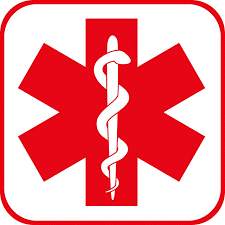The Healing Power of Pets

If you or your family owns a pet, you are probably pretty enthusiastic – even passionate – about your furry, feathery, or finned companion. When you get home from work or school, your pet is likely the first to greet you and the first living being you seek out, whether on good days or bad. What you may not realize is that Fido or Kitty or even the fish in your fish tank may confer as many health benefits as the number of pet toys strewn about your house and yard.
In fact, there is compelling scientific proof that pet ownership has certain health benefits. According to studies conducted by the Cancer Treatment Centers of America as well as numerous other scholarly studies and anecdotal reports, pets can improve your health in many ways.
Top Ten Health Benefits of Pets
No. 1: Better Heart Health

The Centers for Disease Control (CDC), the NIH, and the American Heart Association have all undertaken studies on the relationship of pets to heart health. Beyond the exercise benefits derived from walking Fido, their findings suggest that pet owners have lower blood pressure, cholesterol, and triglyceride levels than non-owners, which can lower the risk for heart disease. Additionally, evidence suggests that those patients who have had a heart attack and have a pet at home recover faster and survive longer than those who are not pet owners. Many studies attribute this positive effect to decreased stress levels among pet owners.
According to a report published by WebMD, cat owners, in particular, were found to be less likely to die of cardiovascular disease than those who had never owned a pet cat. The 20-year study, which involved nearly 4,500 men and women 30 to 75 years of age, revealed that people who had never had a pet cat were 40 percent more likely to die of a heart attack and 30 percent more likely to die of any cardiovascular disease, including heart failure, stroke, and chronic heart disease.
No. 2: Increased Immunity and Reduced Allergies

We all know that pet allergies can trigger asthma and some skin conditions like dermatitis. But as crazy as it may seem, some studies have shown that infants, particularly newborns, who are exposed to pets tend to have a decreased risk of certain allergic diseases. Research studies conducted by the Department of Pediatrics at the University of Wisconsin School of Medicine and Public Health revealed that children who had early exposure (as a newborn) to a dog in their home were much less likely to develop atopic dermatitis and wheezing by age 3. Other studies have revealed that children with pets have increased levels of certain immune system chemicals, which boosts their immunity to disease. Of course, it’s important to note that there are many factors that influence the development of allergies, including genetics, early environmental exposure to allergens, and the mother’s immune status.
No. 3: Potent Stress and Anxiety Relief

Photo courtesy of Ronald McDonald House Charities of the Capital Region, Inc.
There is much scientific research and anecdotal evidence that pets help reduce stress and have a calming influence on their human companions. Whether you are watching tropical fish swim or stroking a cat or dog – or even your pet snake – several studies have confirmed physical changes in the body associated with pet-induced stress reduction. The level of cortisol, a stress hormone, decreases, and the body’s production of dopamine, a neurotransmitter that has a positive emotional effect, increases.
According to a study published in Psychosomatic Medicine and cited by the National Center for Biotechnology Information, heart rate and blood pressure were lower in individuals performing a timed math task in the presence of a dog or cat than in non-pet owners performing the same task, and they made fewer errors in their math when the pet was in the room. That may explain why some educational institutions, like Virginia Commonwealth University, organize pet visitation programs to help reduce anxiety and stress in their students around exam time.
Likewise, programs for the elderly and seriously ill patients of any age sometimes incorporate pet visitation to help reduce anxiety. This approach can contribute to perceptions of enhanced quality of life and can effectively distract them from their pain and discomfort. Such visits can also help reduce the number of emotional outbursts in individuals with Alzheimer’s disease.

Photo courtesy of Albany Medical Center
No. 4: Powerful Social Magnets

If you have ever owned a pet, you know that they can be an automatic icebreaker when meeting and connecting with people. Indeed, many people will go out of their way to greet an animal and then will find it easy to strike up a conversation with its owner. Such social interactions can reduce feelings of loneliness or isolation in pet owners. These social encounters also appear to be good for your health, as several studies reported by the NIH have shown that people with ample opportunities for socialization tend to live longer and are less likely to exhibit physical and mental decline as they age.
If you crave additional opportunities for social contact, there are also several pet-focused online social networking sites that have gained popularity.
No. 5: Exercise Buddies

Pets can be powerful motivators for people to exercise. Whether the exercise is a walk or hike with Fido, a horseback ride with your favorite mount, or vigorous play with your kitten, the activity can help strengthen your bones, improve your coordination, and combat osteoporosis. Indeed, one NIH-supported study of more than 2,500 adults ages 71 to 82 years revealed that those who walked their dog regularly were able to walk more quickly and for longer periods of time – and also demonstrated greater mobility for daily living activities – than those who did not walk or own a dog. Additionally, a report published in the CDC’s Preventing Chronic Disease concluded that “walking a dog may contribute to a physically active lifestyle and should be promoted as a strategy that fits within the framework set forth by the Task Force on Community Preventive Services for Physical Activity.”
No. 6: Mood Boosters

When you’re down in the dumps, do you ever seek out your pet for solace and a little unconditional love – a tail wag or a friendly (albeit sloppy) kiss? Have you ever noticed that your mood brightens a bit when you spend time with your furry friend? Our family certainly has experienced this. On the day that the 9/11 tragedy unfolded, our entire family – including our 11- and 15-year-old daughters – was totally devastated and emotionally drained trying to come to grips with the news. Our remedy? Taking a walk along the river with Rori, our golden retriever. The walk did not alter the events of the day, but spending time outdoors with an exuberant pet did help change our perspective.
Research affirms the blues-busting properties of pets. They can help lift your spirits if you’re depressed, and they can give you a sense of purpose and a reason for being if you’re feeling helpless or doubting your worth. Indeed, according to the NIH, some studies indicate that pet ownership may hold significant benefits for certain populations. For instance, James Griffin, a scientist at NIH’s Eunice Kennedy Shriver National Institute of Child Health and Human Development, notes, “When children are asked who they talk to when they get upset, a lot of times their first answer is their pet. This points to the importance of pets as a source of comfort and developing empathy.” Likewise, therapy dogs and other pets have shown promise in helping veterans cope with post-traumatic stress disorder (PTSD) upon return from a war zone, and in easing loneliness and promoting social behaviors in elderly individuals in nursing home settings.
No. 7: Help for Those with Autism

Children with autism spectrum disorder sometimes have difficulty processing certain sensory stimuli and communicating with others, and they may be uncomfortable in social situations. Some studies have shown that interactions between autistic children and pets may promote social behavior and/or desensitize the child to stimuli they previously found to be noxious.
No. 8: Aides for Independence

Photo courtesy of the Northeastern Association of the Blind of Albany. Photo by Barbara Bentley-Morrill, NABA friend and supporter.
For people with certain disabilities or diseases, specially trained pets can allow them to maintain a level of independence that would not be possible otherwise. Many of us are familiar with guide dogs helping those who are blind, but there are also pets that have been trained to retrieve dropped items, pull a wheelchair, open or close doors, and provide mobility or balance assistance.
No. 9: Medical Alarms

Some pets – dogs in most cases – are specially trained to detect impending medical events or emergencies. For instance, in people with diabetes, a sudden spike or drop in blood sugar levels can have serious health consequences. Diabetic alert dogs use their acute sense of smell to detect chemical changes in their owner’s body that signal the need for a snack, insulin administration, or medical attention. Seizure service dogs undergo special training to assist people with epilepsy, barking to alert family members that their loved one is experiencing a seizure, lying next to the affected person to help prevent injury, or warning the epileptic person to sit or lie down in advance of a seizure. Other service dogs are used to alert their severely allergic human companion to the presence of allergens.
No. 10: Disease Detectives

Most of us who have watched a crime show on TV are familiar with the sight of bloodhounds tracking a missing person or fugitive. But did you know that some dogs have such a highly developed sense of smell that they are also adept at detecting certain diseases in humans?
Recently, researchers discovered that dogs can be trained to detect breast and lung cancer simply by smelling the breath of affected individuals. Additionally, studies are now underway to determine whether the animals can also detect ovarian cancer, a virulent disease for which there is currently no effective screening strategy.
More Studies – and Careful Thought – Needed

There is much research and anecdotal evidence to support the theory that pets confer powerful health benefits for their owners, whether or not they are ill. But more scientific data is needed to study the impact of animals on child development, their potential therapeutic role in promoting physical, emotional, and psychological health, and their capacity for preventing or treating disease.
Likewise, if you don’t already have a pet, it’s important to weigh the benefits of pet ownership against the costs and potential inconveniences. And there are a myriad of factors to consider, including your living environment, work and travel schedule, the type of pet desired, and whether you have children, among others. Bottom line? Your decision shouldn’t be unilateral – you also have to consider whether you and your lifestyle would be good for the pet!
 The Daily Dose
The Daily Dose
Comments are closed.